Do you miss the good old days of statement-making retro 4WDs with space for five and prices that didn’t cost a queen’s ransom?
We’re specifically talking Jeep Wrangler, Toyota FJ Cruiser and Mitsubishi Pajero, which – by the way – could all be had for comfortably under $50,000 up to just a few years ago.
Now, the latter two are six feet under and the former is approaching six figures, joining the remaining retro 4x4s like the Toyota LandCruiser 70 Series, Ineos Grenadier, Land Rover Defender and Mercedes-AMG G63 G-Wagon.
Which is where the striking new GWM Tank 300 steps in.
This is a design-led mid-sized five-seater 4WD wagon with more than a hint of all of the above, but costing closer to Suzuki’s diminutive Jimny.
But does it step up? Let’s dive right in.
GWM Tank 300 2023: Ultra Petrol
| Engine Type | Turbo 4, 2.0L |
|---|---|
| Fuel Type | Unleaded Petrol |
| Fuel Efficiency | 9.5L/100km (combined) |
| Seating | 5 |
| Price From | $39,600 - $46,530 |
| Safety Rating |
|
Price and features – Does it represent good value for the price? What features does it come with?
GWM, of course, is Great Wall Motors – a private company from China started in 1984 and owner of Haval, along with emerging sub-brands like electric-only Ora and, now, Tank for 4WDs.
The first of several Tanks anticipated for Australia, the 300 currently comes in two flavours – Petrol and HEV (for hybrid electric vehicle). The latter adds an electric motor and battery for around $10,000 more.
For this review, we’re testing the Tank 300 Ultra petrol, which kicks off from $50,990 drive-away.
.jpg)
But even the base Lux from $46,990-drive-away’s specification is generous, offering a sunroof, LED headlights, powered front seats, two 12.3-inch digital screens, a 360-degree surround-view camera, Apple CarPlay/Android Auto, a nine-speaker audio system (but no DAB+ digital radio), side steps, roof rails and 17-inch alloy wheels (with a full-sized spare wheel slung out back, naturally).
Stepping up to the Ultra adds goodies like Nappa-leather upholstery, heated/cooled front seats, a lumbar and massage function for the driver’s seat, an audio upgrade, wireless charging, multi-colour ambient lighting, a 220V power outlet, front differential lock and 18-inch alloy wheels.
On the safety front, both models have seven airbags including a front-centre item, autonomous emergency braking (AEB), lane support systems and adaptive cruise control, among other driver-assist tech. See the full list in the Safety section below.
.jpg)
Metallic paint costs another $595.
Retro 4WD wagon rivals? Jimny costs only $26,990. The LandCruiser 70 Series starts from $71,000, the Wrangler from nearly $15K more, while Grenadier, Defender and G63 kick off from $97,000, $97,900 and $365,900 respectively. All before on-road costs.
And the Tank 300 is better-equipped than most except the Benz. It also costs less and packs in heaps more features than most of the ute-based 4x4 wagon alternatives like the Ford Everest, Isuzu MU-X, Mitsubishi Pajero Sport and Toyota Prado – though all offer three-row seven-seat configurations that the GWM does not.
.jpg)
Only the new (and cheaper) Mahindra Scorpio approaches the 300 on the price/value equation, but it currently lacks driver-assist safety tech, sadly.
And none as-yet offer that hybrid option, which bumps up the price of the Lux HEV to a still-reasonable $55,990 and the Ultra HEV to $60,990 – both being drive-away, of course.
All-in-all, then, a compelling value argument win for GWM.
Design – Is there anything interesting about its design?
Still fresh on the market, the Tank 300 currently attracts a lot of attention. Most comments mention it looking like "a Jeep”, though none could actually name which model specifically.
The Wrangler is an obvious influence up front, as is the Geländewagen (G-Wagon) and 1980s LandCruiser 60 Series. All have round headlights and simple grilles in common.
The 300's silhouette is reminiscent of the LandCruiser 80 Series (1990s) – especially around the window shapes, curved hips and rounded turret.
.jpg)
Proportionally as well as size-wise, the Tank 300 is also very close to the latter, and is in the same ballpark as the more-modern FJ Cruiser, Defender and Geländewagen.
Length, width, height and wheelbase dimensions are 4760mm, 1930mm, 1903mm and 2750mm respectively. Track widths are 1608mm, ground clearance is 224mm, approach angle is 33 degrees and departure angle is 34 degrees.
A friendly face, clean lines and an evocative presence should all spell success for GWM. The 300 will sell on styling alone. And that’s before the knockout cabin presentation and layout is considered.
.jpg)
Practicality – How practical is its space and tech inside?
The Tank 300 follows classic 4x4 tropes, from the square roof line, flattish windscreen and boxy proportions, to the oversized pillar-sited grab handles and prominent 4WD switchgear.
Oh, and of course, the lofty seating position. This is a ladder-frame chassis vehicle, after all, so you have to climb up and into the 300's interior.
Being a high-set medium-sized SUV, there’s space aplenty, including a decent amount of legroom for taller drivers, and that’s also aided by a tilt/telescopic steering wheel adjuster. That wheel’s good to hold, too. And vision out is exceptional.
Taking it all in, you’d swear the 300's cabin is a homage to the Geländewagen, with the Mercedes clearly serving as a massive inspiration for the dash design, layout and presentation.
.jpg)
Shockingly, given the price point, it feels luxurious – at least, in the Ultra as tested, with pleasingly premium finishes. The stitched vinyl-like dash top, perforated Nappa leather seat upholstery, pleated stitched door cards, turbine air vents, cream roof material and metallic-style trim all seem top notch. So are the way the various switchgear looks and feels.
But is that gauche analogue clock in the centre a step too far, though?
Then there’s the huge display, which contains both electronic instrumentation as well as a multimedia touchscreen.
The former can be info-overload at first, but familiarisation soon reveals a comprehensive and well laid-out design that is also multi-configurable. Along with the digital readouts for speed and fuel, all sorts of data is shown, including audio and vehicle operation.
.jpg)
Meanwhile, the touchscreen is the best we’ve seen in a Chinese-branded vehicle, with easily-discernible icons, a logical layout and a nice swipe action function.
And we’re extremely relieved that climate control hard buttons are fitted, so you’re not always fumbling to change temperature or fan speeds. Still on practicality, ventilation is great and storage is ample.
On the other hand, the front seats look much better than they feel, with a numb-bum flatness that becomes tiresome after a while.
The touchscreen works fine, but accessing sub menus and the many vehicle and multimedia controls is tricky – these haptic touchpoints might work on a desktop, but in a moving vehicle, they only add complication, confusion and distraction. And both front seatbelts rattle against the pillar when not used. Loudly so.
.jpg)
Stepping into the back-seat area, there’s more to admire. Just beware of that low side-step as you enter, as at certain angles, you leg could smash into the corner edge, with extremely painful results…
Mirroring the front for ambience, the rear seat consists of an asymmetrically-split cushion and backrest. Thoughtfully, the former tilts forward simply to allow the latter to fold down totally flat, creating a low and useful luggage-area extension.
The backrest itself reclines a few degrees, and is adequately comfortable, on shorter journeys anyway. Note the cushion does not slide forward or back, though.
Occupants can enjoy two USB outlets, rear-facing air-vents, four grab handles, windows that drop all the way down (Fido will be pleased), reading lights, some useful storage and the ubiquitous armrest with cupholders. Everything essential is present.
Further back, the side-opening door swings open wide on the correct side – that is, from the kerb side (are you listening, Mercedes?), and has a hold function so that heavy tailgate won’t slam shut on you. Of course, the spare wheel is slung from behind, so there’s no need to worry about access to that.
There’s a very high loading lip up to the large and wide aperture, but clear that, and you’re met with more nice finishes within the flat if narrow floor area, with tie-down hooks, lighting, side storage nets and 12V outlets.
Cargo capacity is a smallish 400 litres (extended to 1635L), which is not very competitive. The floor lifts to reveal a few small storage options, but no luggage cover is fitted, which is an oversight for those who need to keep their gear out of sight.
Otherwise, the interior fit, finish and presentation far exceed expectations at this price point. It is the equal of some 4WDs costing twice and even seven times the price.
Under the bonnet – What are the key stats for its engine and transmission?
The Tank 300 is powered by a 2.0-litre turbocharged four-cylinder petrol engine. It produces 162kW of power at 5500rpm and 380Nm of torque from 1800-3600rpm.
Tipping the scales at a hefty 2155kg, it delivers 75kW per tonne, which isn’t very strong. Towing capacities are 2500kg braked/750kg unbraked.
Drive is sent to the rear wheels via a ZF-sourced eight-speed torque-converter automatic transmission. A part-time four-wheel drive system is fitted, featuring 4H high-range and 4L low-range gearing for off-road driving.
.jpg)
A front differential lock is of course standard. The Ultra also adds a rear differential lock as part of the All-Terrain modes.
Steering is an electric rack and pinion set-up, while the suspension features double-wishbones up front and what GWM refers to as a non-independent multilink design out back. Our Ultra was fitted with quality Michelin Primacy SUV 265/60R18 tyres.
Finally, with 224mm of ground clearance, the Tank 300 offers a 33-degree approach angle and 34-degree departure angle.
Efficiency – What is its fuel consumption? What is its driving range?
Keeping the value theme going, the Tank 300 petrol can drink from the 91 RON unleaded bowser, instead of the more-expensive brew.
That’s one saving grace, because while the official fuel-consumption average is an-OK 9.5 litres per 100km, our pump-to-pump average turned out to be a thirstier 13.8L/100km.
.jpg)
This was from a mixture of inner-city, urban and highway driving, with no off-road excursions at all.
Interestingly, the trip computer readout fluctuated over our time with it, averaging 14.2L/100km but occasionally hitting 19L/100km.
Fitted with a 75-litre fuel tank, expect to average around 785km based on the official figure, though not from our real-world results.
Driving – What's it like to drive?
Most ladder-frame chassis 4WD wagons can feel cumbersome to drive around town or in the ‘burbs compared to regular, monocoque SUVs.
With remote steering and a ride on chunky 4x4-specific tyres that is clearly set up to soak up big bumps found off the beaten track, but at the expense of on-road suppleness, they can feel like a handful – particularly at speed.
A Suzuki Jimny is far less athletic than the similarly-sized Ford Puma, for example.
The exception is the Ford Everest, which is a shining example of Australian road tuning and finessing.
.jpg)
Now, the surprising thing here is that – on the road where we drove it exclusively – the Tank 300 falls somewhere in between.
Select drive, and you’ll instantly notice how quiet and civilised the 2.0-litre turbo-petrol engine is. Aided by a slick-shifting and well-calibrated eight-speed auto transmission, it accelerates smoothly and swiftly, and seems well-suited to urban traffic conditions. Especially with just two people on board, you’d even call the GWM rapid.
Another plus point is the considered weight and response of the steering. U-turns are easy, helped out by minimal steering effort and great vision, and it’s simple to place and manoeuvre the 300 exactly where you need it. This is a tank in name only.
Better still, even on 18-inch alloys, the suspension does a great job smoothing out the bumps, resulting in an isolated feeling that’s in keeping with the Ultra’s upmarket ambience. Clearly, the Michelin SUV tyres are a clever choice.
.jpg)
The 300 is starting to really impress us.
But then you hit the freeways and highways, and the sheen begins to wear off a little.
In strong winds or darting in and out of lanes, you’re aware of the softly-sprung and high-riding chassis underneath. Sudden turns can make it seem slightly unsettled and nervous, dissuading most people from driving briskly through curvy corners out on the open road.
Of course, the 300 is not meant to be a handling hero, but its around-town alacrity might lull some into believing you could hurtle this along twisty roads like it's a Mazda CX-5. No way.
.jpg)
The petrol engine, meanwhile, needs to rev high for its maximum power (162kW) to be felt, meaning that flooring the throttle for fast overtaking needs a moment or two to occur. And that’s before you add more passengers, or heavy cargo out back, which means the turbo has to work even harder.
That lazy, torquey punch you find in diesel alternatives just isn’t available. And nor is their comparative economy, since the Tank 300 petrol engine’s workout comes with a hefty thirst. For these reasons, we’d consider stretching to the 258kW/615Nm HEV, with its promise of effortless hybrid punch and 8.4L/100km frugality.
What may be even more annoying for some people, however, are the adaptive cruise control and lane-keep systems, which can become overly-sensitive and thus too abrupt in their intervention.
Even a gentle curve will wash off speed with the adaptive cruise, as do vehicles parked along a narrow road sometimes, while the lane-assist’s regular and unwelcome steering-wheel nudging borders on obtrusive.
.jpg)
Now, compared to other (non-electric) vehicles from Chinese brands, and GWM Haval more specifically that we’ve tested, the 300 is actually better than most. And, we found turning this driver-assist tech off (not an easy task to perform on-the-fly as it's buried in sub menus) is a solution. But that’s hardly the point of having active safety tech… and, anyway, the lane-assist then turned itself on again when the vehicle was restarted later on.
This is why we advocate Australian road tuning for such systems. Even a brief drive in an Everest will show how much-more nuanced and even enjoyable they can be.
Back in town, though, the value-packed 300 really works well, impressing us with its easy, refinement, agility, comfort and all-round suitability. As an urban-jungle warrior, this is one of the most impressive 4WDs we’ve experienced – at any price. Just remember that this is no dynamic SUV when the roads and speeds open up.
For the off-road assessment please read Marcus Craft’s detailed Adventure review - coming soon.
Warranty & Safety Rating
Safety – What safety equipment is fitted? What is its safety rating?
Tested late last year, ANCAP awarded the Tank 300 a five-star rating.
Furthermore, it scored consistently high marks in all four disciplines – adult and child protection as well as vulnerable road user/pedestrian and safety-assist systems.
The Tank 300 features many of the latest driver-assist safety tech, including AEB with front collision warning. This system is operational to 90km/h for pedestrian, cyclist and back-over operation, and from 5km/h to 150km/h for car-to-car operation.
The lane support systems include lane departure warning, lane keep assist, lane centring, emergency lane keeping and lane change assist. These start from 60km/h to 150km/h.
.jpg)
Other safety tech includes blind spot monitoring, adaptive cruise control, traffic sign recognition, door open warning and rear collision warning.
Note that while rear cross-traffic alert is fitted, you’ll need to step up to the HEV hybrid for front cross-traffic alert, as well as 'High Way Assist'.
The latter is a Level 2.5 autonomous driving tech which GWM describes as “… a driving assistance system that integrates multiple functions. The system is designed to free the driver’s hands and feet and improve driving comfort. It includes early warning, active collision avoidance and other safety functions.”
.jpg)
Electronic stability control, electronic brake-force distribution with brake assist, an event data recorder, hill start assist, hill descent control, a 360-view monitor, front and rear parking sensors, tyre pressure monitors, and seven airbags including dual front, front-side, front-centre and curtain items are also fitted.
Plus, there is a 'Transparent Chassis Function' available, that uses cameras dotted around the vehicle to allow the driver to see the road surface directly ahead and beneath the vehicle.
Finally, ISOFIX child-seat latches are fitted to outboard rear seat positions, while a trio of top tethers for straps are included across the back bench.
If only all this excellent comprehensive safety tech was tuned for Australian road conditions and driver habits. More local testing would help, based on our experience with the ACC and lane support systems.
Ownership – What warranty is offered? What are its service intervals? What are its running costs?
The Tank 300 comes with a seven-year/unlimited kilometre warranty, as well as five years of roadside assistance.
GWM also offers five-year capped-price servicing.
The first is at 12 months or 10,000km, whichever comes first, and costs $300. So is the second, though that’s at 24-months/25,000km, increasing the intervals from 10,000km to 15,000km. The 36-month/40,000km and 48-month/55,000km service cost $550 apiece, and the 60-month/70,000km service drops back to $300.
.jpg)
Verdict
Strikingly-styled outside, suave inside, with lots of kit and an ability to make driving in city traffic fun, the Tank 300 has lots going for it.
And that’s before factoring in the value pricing and impressive warranty.
But as speeds rise, our estimation falls a little, with the turbo-petrol engine having to work hard with a big load on board, resulting in sluggish performance and heavy fuel consumption. And the lack of driver-assist safety tech finesse remains an issue with GWM vehicles.
As an urban family runabout with a knack for off-road adventure, the Tank 300 excels, then. Maybe save up for the hybrid, as that at least restores that missing muscle and economy.
Pricing Guides

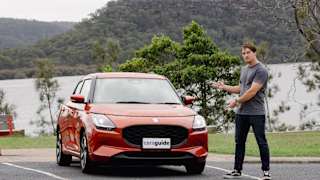
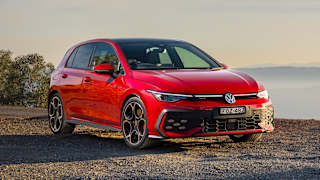
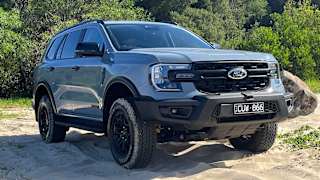
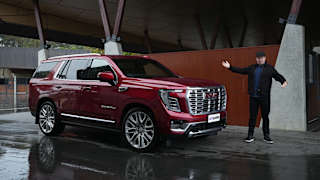


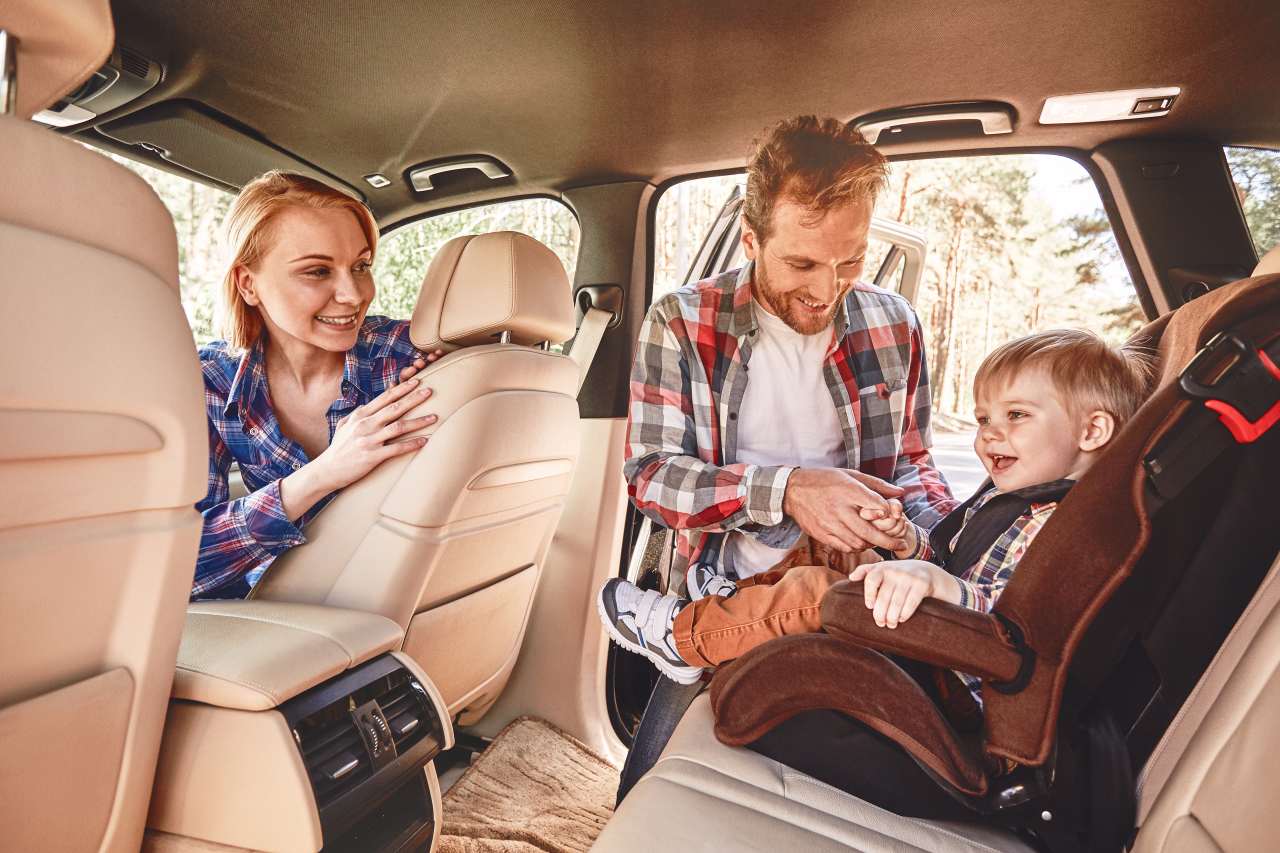








.jpg)
.jpg)
.jpg)
.jpg)

.jpg)





















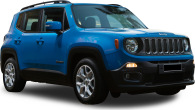




















 copy.png)

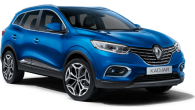











.jpg)
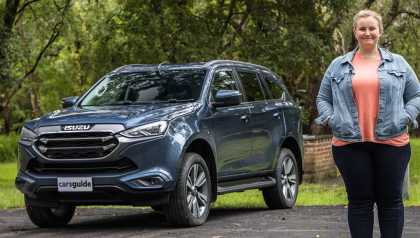
.jpg)

.jpg)
.jpg)

